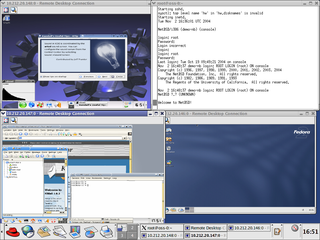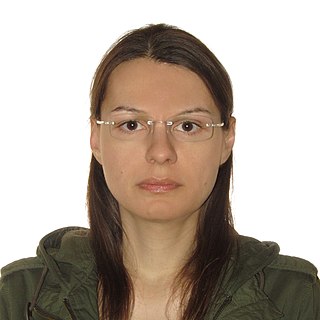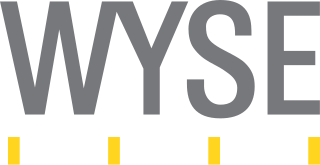
Citrix Systems, Inc. is an American multinational cloud computing and virtualization technology company that provides server, application and desktop virtualization, networking, software as a service (SaaS), and cloud computing technologies. Citrix claims that their products are used by over 400,000 clients worldwide, including 99% of the Fortune 100 and 98% of the Fortune 500.

Xen is a free and open-source type-1 hypervisor, providing services that allow multiple computer operating systems to execute on the same computer hardware concurrently. It was originally developed by the University of Cambridge Computer Laboratory and is now being developed by the Linux Foundation with support from Intel, Citrix, Arm Ltd, Huawei, AWS, Alibaba Cloud, AMD, Bitdefender and epam.
A hypervisor, also known as a virtual machine monitor (VMM) or virtualizer, is a type of computer software, firmware or hardware that creates and runs virtual machines. A computer on which a hypervisor runs one or more virtual machines is called a host machine, and each virtual machine is called a guest machine. The hypervisor presents the guest operating systems with a virtual operating platform and manages the execution of the guest operating systems. Unlike an emulator, the guest executes most instructions on the native hardware. Multiple instances of a variety of operating systems may share the virtualized hardware resources: for example, Linux, Windows, and macOS instances can all run on a single physical x86 machine. This contrasts with operating-system–level virtualization, where all instances must share a single kernel, though the guest operating systems can differ in user space, such as different Linux distributions with the same kernel.

Joanna Rutkowska is a Polish computer security researcher, primarily known for her research on low-level security and stealth malware, and as founder of the Qubes OS security-focused desktop operating system.
Desktop virtualization is a software technology that separates the desktop environment and associated application software from the physical client device that is used to access it.

Microsoft Hyper-V, codenamed Viridian, and briefly known before its release as Windows Server Virtualization, is a native hypervisor; it can create virtual machines on x86-64 systems running Windows. Starting with Windows 8, Hyper-V superseded Windows Virtual PC as the hardware virtualization component of the client editions of Windows NT. A server computer running Hyper-V can be configured to expose individual virtual machines to one or more networks. Hyper-V was first released with Windows Server 2008, and has been available without additional charge since Windows Server 2012 and Windows 8. A standalone Windows Hyper-V Server is free, but has a command-line interface only. The last version of free Hyper-V Server is Hyper-V Server 2019, which is based on Windows Server 2019.
Ceedo is a cybersecurity company based in Netanya, Israel. Ceedo uses software virtualization technologies to create application containers, claiming to eliminate or reduce endpoint security threats like viruses or ransomware.
In computing, virtualization or virtualisation in British English is the act of creating a virtual version of something at the same abstraction level, including virtual computer hardware platforms, storage devices, and computer network resources.
VMware Horizon is a commercial desktop and app virtualization product developed by VMware, Inc for Microsoft Windows, Linux and macOS operating systems. It was first sold under the name VMware VDM, but with the release of version 3.0.0 in 2008 it was changed to "VMware View". The name was updated to "Horizon View" with the launch of version 6 in April 2014 and is now referred to as "VMware Horizon" to represent desktop and app virtualization.
Leostream, founded in 2002, is a privately held technology company based in Waltham, Massachusetts. Its flagship product is a connection broker for virtual desktop infrastructure (VDI) and resources hosted in the datacenter.

libvirt is an open-source API, daemon and management tool for managing platform virtualization. It can be used to manage KVM, Xen, VMware ESXi, QEMU and other virtualization technologies. These APIs are widely used in the orchestration layer of hypervisors in the development of a cloud-based solution.
Wanova, Inc, headquartered in San Jose, California, provides software allowing IT organizations to manage, support and protect data on desktop and laptop computers. Wanova's primary product, Wanova Mirage, was designed as an alternative to server-hosted desktop virtualization technologies.

Wyse Technology, Inc., or simply Wyse, was an independent American manufacturer of cloud computing systems. As of 2012, Wyse is a subsidiary of Dell. Wyse are best remembered for their video terminal line introduced in the 1980s, which competed with the market-leading Digital. They also had a successful line of IBM PC compatible workstations in the mid-to-late 1980s. But starting late in the decade, Wyse were outcompeted by companies such as eventual parent Dell. Current products include thin client hardware and software as well as desktop virtualization solutions. Other products include cloud software-supporting desktop computers, laptops, and mobile devices. Dell Cloud Client Computing is partnered with IT vendors such as Citrix, IBM, Microsoft, and VMware.
Second Level Address Translation (SLAT), also known as nested paging, is a hardware-assisted virtualization technology which makes it possible to avoid the overhead associated with software-managed shadow page tables.
Founded by Alex Vasilevsky, Virtual Computer was a venture-backed software company in the Boston area that produces desktop virtualization products, which combine centralized management with local execution on a hypervisor running on PCs. By running the workload on the PC, Virtual Computer enables companies to have centralized management without servers, storage, and networking required for server-hosted VDI.
VM-aware storage (VAS) is computer data storage designed specifically for managing storage for virtual machines (VMs) within a data center. The goal is to provide storage that is simpler to use with functionality better suited for VMs compared with general-purpose storage. VM-aware storage allows storage to be managed as an integrated part of managing VMs rather than as logical unit numbers (LUNs) or volumes that are separately configured and managed.
Bromium was a venture capital–backed startup based in Cupertino, California that worked with virtualization technology. Bromium focused on virtual hardware claiming to reduce or eliminate endpoint computer threats like viruses, malware, and adware. HP Inc. acquired the company in September 2019.
GPU virtualization refers to technologies that allow the use of a GPU to accelerate graphics or GPGPU applications running on a virtual machine. GPU virtualization is used in various applications such as desktop virtualization, cloud gaming and computational science.
Citrix Virtual Apps is an application virtualization software produced by Citrix Systems that allows Windows applications to be accessed via individual devices from a shared server or cloud system.
Citrix Virtual Desktops is a desktop virtualization product.





